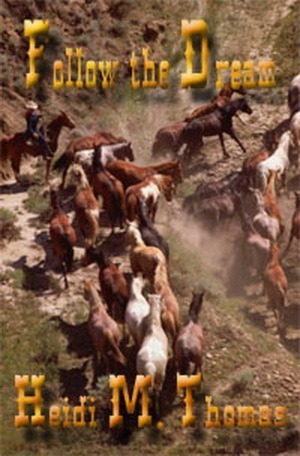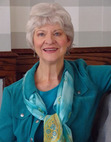Heidi M. Thomas's Blog, page 23
August 24, 2011
Follow the Dream Wins WILLA Award
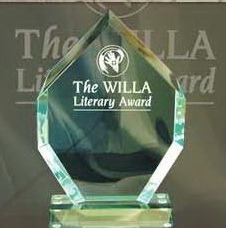 I am excited and honored to announce that my second novel, Follow the Dream, sequel to EPIC-award winning Cowgirl Dreams, has won the national WILLA award.
I am excited and honored to announce that my second novel, Follow the Dream, sequel to EPIC-award winning Cowgirl Dreams, has won the national WILLA award.
Both novels are based on my grandmother who rode bucking stock in Montana rodeos during the 1920s and '30s.
Named for Pulitzer prize-winning Willa Cather, one of our country's foremost authors, the WILLA is awarded by the Women Writing the West organization. It is given annually for outstanding literature featuring women's stories set in the west. Awards are chosen by a distinguished panel of librarians and presented at the annual WWW Conference.
This year's conference will be held Oct. 14-16 at the Embassy Suites in Lynnwood, WA. Keynote speakers are Nancy Pearl and Ellen Waterston. The conference features workshops on writing, publishing, and marketing, panel discussions, a bookstore, and agent/publisher appointments. All writers are welcome. For information and to register, go to the WWW website.
Nettie Moser's dreams are coming true. She's married to her cowboy, Jake, they have plans for a busy rodeo season, and she has a once in a lifetime opportunity to rodeo in London with the Tex Austin Wild West Troupe.
But life during the Great Depression brings unrelenting hardships and unexpected family responsibilities. Nettie must overcome challenges to her lifelong rodeo dreams, cope with personal tragedy, survive drought, and help Jake keep their horse herd from disaster.
Will these challenges break this strong woman?
To read an excerpt from Follow the Dream or Cowgirl Dreams, go to my website at Heidi M. Thomas.








August 22, 2011
Free e-book from Craig Lancaster
 Craig Lancaster, whose novels 600 Hours of Edward and The Summer Son have been featured here, has a new book coming out in December: Quantum Physics and the Art of Departure, a collection of ten short stories.
Craig Lancaster, whose novels 600 Hours of Edward and The Summer Son have been featured here, has a new book coming out in December: Quantum Physics and the Art of Departure, a collection of ten short stories.
Before the book's release, Craig is making available FREE copies of the e-book version. To get your own copy, simply follow these steps:
Go to this link at Smashwords. (Note: If you don't have a Smashwords membership, you'll have to sign up for one. Don't worry: It's totally free, and there are a lot of other e-book bargains there, too.)
Select the format you want and enter this coupon code at checkout: EY63S.
The offer is good until Sept. 30. Feel free to pass this information along to your friends.
Here's Craig with some more information about the new book:
Q: First of all, why are you offering free copies of the e-book?
After two novels, my experience is that word of mouth is the best advertisement for a book, so I'm hoping that folks who read Quantum Physics and the Art of Departure before its release will be kind enough to give me an honest review wherever they spend time, be it with friends, at Amazon.com, BN.com, Goodreads, LibraryThing (or all of those places!). I can't emphasize the bit about honesty enough: I'm not trying to engineer good reviews, although I certainly won't turn them down. The important thing is to get responses, good or bad, from people who are passionate about books, so other people who share that passion might be inclined to take a look.
Q: Why did you shift from novels to short stories?
It wasn't a conscious choice. I write nearly every day, and last fall, after I turned over my second novel to my publisher, I hit a particularly rich vein of short fiction. I also managed to retrofit a couple of failed novel projects into successful short stories.
Fortunately, I'm not writing to fulfill a contract, so I have the freedom to follow where inspiration takes me. For nearly a year, I ended up with short stories. So … here they are. And now that this book is done, I am back to work on a couple of novel ideas. So there's really been no shift – just a slight deviation.
Q: What's the deal with the title?
It's a little inscrutable, but I like the lilt of it, and I promise, there's title justification within the body of the book. One of the ten short stories shares the title.
Q: Is there an overriding theme to the stories?
A few of them are connected, and all of them take place in Montana, where I live. If I had to identify a unifying theme, it would be this: separation. Not just in the marital sense – although that's certainly in the book – but also in the emotional and physical senses. The stories vary in style and subject matter. I think it's an intriguing collection.
Here's the back-cover copy of the book:
A championship basketball coach caught between his team, his family and the rabid partisans in his town. A traveling salesman consigned to a late-night bus ride. A prison inmate stripped of everything but his pride. A teenage runaway. Mismatched lovers. In his debut collection of short fiction, award-winning novelist Craig Lancaster (600 Hours of Edward, The Summer Son) returns to the terrain of his Montana home and takes on the notion of separation in its many forms – from comfort zones, from ideas, from people, from security, from fears. These ten stories delve into small towns and big cities, into love and despair,into what drives us and what scares us, peeling back the layers of our humanity with every page.
For more information about Craig Lancaster and his work, please visit his website.








August 17, 2011
"Proud to Be Here" with Trace Adkins
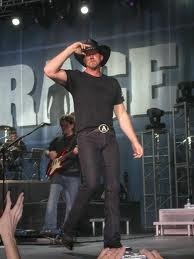 My husband and I had the privilege of attending a concert at the Lynden WA fair, where country singer Trace Adkins put on a great show.
My husband and I had the privilege of attending a concert at the Lynden WA fair, where country singer Trace Adkins put on a great show.
I like his new CD, "Proud to Be Here," and love the deep bass voice. One of my favorites on his new album and one he sang last night was "Just Fishin'," talking about fishing with his daughter and what that means to him. He also teams up with Blake Shelton on this CD with "If I was a Woman," a fun song poking fun at each other.
One thing I can't figure out about concerts, indoors or out, is why the speakers are turned up so loud that you can physically feel the bass thumping against your chest. And we are there to hear the singer, but we couldn't really hear him very well because of that. Is it the venue organizers or is it because the band is accustomed to playing in bigger arenas?
I did enjoy being there, being part of an enthusiastic crowd, and seeing Adkins in person. Just wish I could've recognized my favorite songs a little easier.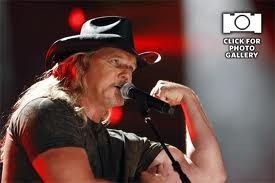








August 8, 2011
Sergeant Reckless: A Warhorse Hero
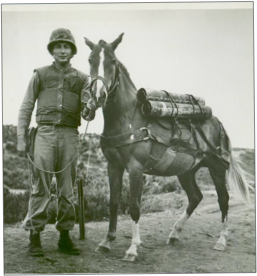 Here is a bit of history I'll bet you've never known. I hadn't heard of Reckless, the war hero horse. She was a little Mongolian sorrel purchased by an American Lieutenant for $250, and she proved her worth many times over. LIFE Magazine even included her in a write-up about the top heroes of all time.
Here is a bit of history I'll bet you've never known. I hadn't heard of Reckless, the war hero horse. She was a little Mongolian sorrel purchased by an American Lieutenant for $250, and she proved her worth many times over. LIFE Magazine even included her in a write-up about the top heroes of all time.
View the video about Sergeant Reckless.








August 4, 2011
What is Editing?
There are several different types of editing: For example I was the editor of the Women Writing the West catalog for three years. And basically what I did, was to organize all the information and prepare it for the designer and printer. I didn't do much if any, changing of the copy that came in from the authors.
When working on someone's manuscript, you have basically two types involved: line editing (copy editing) and conceptual (or substantive) editing.
Line editing: making changes on a sentence-to-sentence level. Taking a look at grammar, style, sentence structure, typos, punctuation. (I can hardly read a manuscript without marking commas)
Conceptual editing looks at the overall book to see what's missing, what scenes can be intensified, and what sort of story-level changes could be made to strengthen a work.
Making a work better and stronger isn't just about fixing the things that don't work – it's about strengthening the best parts as well. My job as editor is to think along with you, the writer, and help make your writing more effective.
A few things for writers to remember:
The better you are, the more criticism you're likely to get. If your work sucks, it doesn't take a lot of detail to tell you so. On the other hand, if you're a terrific writer there may be lots of subtle improvements you're capable of pulling off.
If lots of people don't get what you're doing, it's you. If one person doesn't understand what you're trying to pull off, then maybe it's that person, but if you get the same criticism repeatedly, then you're not getting your point across. If you have to explain the joke before people get it, it's not funny.
Don't make corrections blindly. If you really feel that the editor doesn't get what you're trying to do, don't jump in and make all the corrections anyway. Even when writer and editor are on the same page, you'll probably only make about 50% of the editor's suggestions. (Although you'll address all of them, accomplishing some in different ways and deciding that others don't actually help.)
Often the purpose of conceptual edits is to make you think about how a scene works and point out ways to make it stronger; it doesn't mean you won't find a better way to address those weaknesses than the ones I suggest. Just approach them with an open mind.
My favorite quote is from Ernest Hemingway: "There are no great writers, only great re-writers."








July 26, 2011
My guest this week is Wilma F. Smith, author of The Esthe...
 My guest this week is Wilma F. Smith, author of The Esther Vice House, a memoir about her mother.
My guest this week is Wilma F. Smith, author of The Esther Vice House, a memoir about her mother.
Synopsis: During the spring of 1929, a terrible accident forever changes the life course of Esther Clark, a young teacher in a rural Indiana schoolhouse. As she races out the door, she is shocked to see six-year-old Willie writhing on the ground, holding his bloody eye. A whirlwind of events carries the unwilling and skeptical Esther through revival meetings by a traveling evangelist and dumps her in despair when the school board unexpectedly fires her. What's more, her mother shames her into an unlikely marriage that propels her on a cross-country life journey that challenges her faith, explores the hardships of poverty and loneliness, and ultimately provides testament to the perseverance of the human spirit.
Wilma, Tell us the motivation for writing your mother's story.
I always admired my mother for her tenacity in coping with adversity and sheer poverty. She was determined to raise her three children with an appreciation for beauty, education, and caring for others. Her life was never easy, and she coped with two antagonists—her mother and her husband—while she sought ways to prepare her family for a happier life than she experienced. One day, after I had retired, Mom showed up at my Camano home with a box full of letters, keepsakes and journals. "Maybe someday you'll write about us," she said. "There should be some interesting stories in here."
What made you decide to write it from first person POV?
I had a tough time writing the first chapter, about the boy who lost his eye. I had tried using the omniscient point of view, but it wasn't working. I found a creative writing group at our RV Park in Tucson, and they were instrumental in helping me find the right "voice"—that of my mother. Once I re-wrote the chapter from her point-of-view, the narrative flowed. I became my mother.
Was that POV easier or more difficult, either by putting yourself into the character's feelings and reactions or by trying to avoid it?
When I put myself into Mom's character, I felt I could see clearly where the story was going and what events were important to write about. When I read her journals, I was able to "get inside her head" and recount her narrative as though I were Esther.
Did your mother read any of your manuscript before she passed on? (If so, what was her reaction?)
on? (If so, what was her reaction?)
I am so sorry that she passed away before I wrote her story. I'll always wonder if she would have approved of the way I presented her. She probably would tell me I made her look "too good, too smart." She was a humble woman, often unsure of herself.
What was your process like in researching, writing and publishing this book?
I traveled to Indiana several times over the past years, exploring the towns and countrysides where Esther and Thomas lived. I went to the courthouse and found vital records of their families, and visited a cemetery in a lonely churchyard where Thomas' family was buried. I walked the streets of Garrett and tried to imagine Esther walking home from the interurban train stop in town. I read through years of Esther's journals and reflections, and studied accounts of Clark siblings' reunions that occurred from the 1970s. All five living Clark siblings wrote anecdotes of their growing-up years. And, I referred to my own journals that I have kept since high school days.
I decided to begin Mother's story with her one-room school tragedy and to end it with her amazing adventures in retirement. What a resolution that was…a triumph over struggles, poverty, and despair.
I can't say enough good things about the two writing critique groups I've experienced in Burlington, Washington, and Tucson, Arizona. Every week I had the opportunity of reading my story to a small group of authors who read critically and made helpful suggestions to make the writing better. Also, I thank my son, Antony Smith, a wonderful writer himself, who took the time to help me improve my writing. My sister, Cyd Li, read each chapter and added her perspective of our growing-up years. My husband, John, encouraged me and wouldn't let me quit. Finally, I thank you, Heidi, for completing an early edit of my manuscript, which helped me move forward with a measure of confidence.
Why did you decide to self-publish?
I submitted my manuscript to a number of agents/publishers during a two-year period, but received only rejections. In 2010 I attended the Whidbey Island "Chat House" for authors. There I was encouraged by two different agents to submit my manuscript. One agent encouraged me to consider self-publishing as an option. When I learned that the publishing process takes at least two years, I decided to go ahead with publishing it myself. I have been very pleased with Gorham Printing in Centralia, Washington. They guided me through the entire process and designed the cover as well.
Was this a good experience for you? What advice would you give authors wanting to self-publish?
Yes, it was a good experience. I researched several other printing options, and am glad I went with Gorham. For authors wanting to self-publish, I would recommend a very helpful reference, Publish Your Nonfiction Book, by Sharlene Martin and Anthony Flacco, a Writer's Digest Book. Another worthwhile (and voluminous) reference is The Complete Guide to Self-Publishing by Marilyn Ross and Sue Collier.
How are you marketing your book?
I am working with local bookstores that take my book on consignment (The Tattered Page in Mount Vernon, The Snowgoose Bookstore in Stanwood, and The Next Chapter in La Conner). I have done readings and sold copies at art exhibits, arts and crafts shows, and book clubs. Our local newspaper, The Stanwood Camano News, published an article about my book. I have a blog (http://wilmawrites4fun.blogspot.com) where I am sharing photos and anecdotes about the people and places in the book. The blog is connected to PayPal for those who wish to purchase The Esther Vice House. Also, anyone interested can send me a check for $13.00 (includes tax and shipping) at 119 Vista Del Mar Street, Camano Island, WA 98282.
Tell us about your background and have you written before?
I spent forty years in the education field—as teacher, principal, superintendent, university professor, and consultant. I have published articles and books—but all of these were in regard to my profession. However, ever since I was in elementary school I wrote plays and short stories for fun. It wasn't until I retired that I seriously considered writing and publishing a book like The Esther Vice House.
Do you have another project in underway?
Yes! Currently, I am working on the story of my career as a teacher, administrator, and professor. I had the privilege of serving as a principal and superintendent at a time when very few women were chosen for these positions. "What? A woman principal?" Over and over I had to prove that I was capable to fulfill those responsibilities. But mostly, my story is about the wonderful children, young adults, and fellow educators who made life interesting, worthwhile, and full of laughter and tears. I'm titling it All I Ever Wanted Was to Teach First Grade.
That sounds like a wonderful title. Thank you for joining me today, Wilma.
Wilma F. Smith is a retired educator who served as teacher, principal, superintendent of schools, consultant, and senior associate for a national network of schools and colleges. She is a member of the Skagit Valley Writers League in Burlington, Washington, and participates each winter in a creative writing group in Tucson, Arizona. She is married to John E. Smith and lives on Camano Island, Washington.








July 22, 2011
National Day of the Cowboy (and Cowgirl)
July 23 celebrates our western heritage.
Western writer J.R. Sanders has organized an event, "Read 'em Cowboy!" at the Barnes and Noble in Redlands, CA. Even if you can't attend the event, you can support western writers and a worthy cause
By using vouchers found on the Facebook page, a percentage of your purchase at ANY Barnes and Noble store will go to the Western Writers of America's Homestead Foundation, which promotes the literary preservation of Western culture, history and traditions. If you buy online at Barnes and Noble just enter the Bookfair ID# (10510444) when prompted at checkout.
And they like National Day of the Cowboy so much, they're extending it for 5 days! You can make purchases in-store or online anytime from July 23rd through July 28th and B&N will honor the vouchers/Bookfair ID# .
Here's a perfect excuse to add to your Western library (books, music, movies all count), get your Christmas shopping in early, and support Western culture to boot.
Leave a comment on this blog about what "cowboy" or "cowgirl" means to you or a favorite anecdote, and I will enter you into a drawing for your choice of a copy of Cowgirl Dreams or Follow the Dream.








July 21, 2011
10 Things You Might Not Know About Punctuation








July 12, 2011
Book Promotion: The Foundation
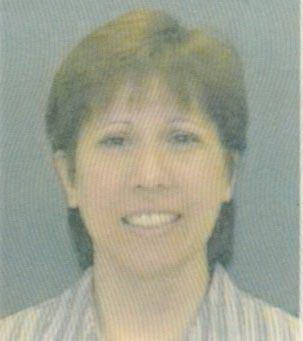 Karen Cioffi is stopping by today on her virtual book tour with her new children's book Walking Through Walls. Here's her excellent advice about promoting your book.
Karen Cioffi is stopping by today on her virtual book tour with her new children's book Walking Through Walls. Here's her excellent advice about promoting your book.
By Karen Cioffi
Every author has thought it, said it, and heard it: promotion is the roll-up-your-sleeves, and dig-in part of writing. It's the much more difficult and time consuming aspect of writing that every author needs to become involved with . . . if he wants to sell his books.
To actually sell a book, you need to have a quality product. This is the bare-bottom, first rung of book promotion . . . the foundation.
Creating a Quality Product
The very first step in book promotion is to create a quality product. Hopefully, you noticed I said create a quality product, not just a good story. What this means is that all aspects of your book need to be top notch.
A. The Story
To start at the very beginning, the first factor to be dealt with is to be sure your story has all the essential elements. According to Yale-New Haven Teachers Institute, there are five major elements of a story: characters, setting, plot, point of view, and theme.
All the elements of a story should complement each other, should move each other forward, draw the reader in, and end with a satisfying conclusion. They should work together to create a story that will be remembered.
Suppose your story is action packed and plot driven, but it lacks believable and sympathetic characters, it will fall short. The same holds true if you have a believable and sympathetic character, but the story lacks movement. Again, it will be lacking. As with all things in life balance is necessary, the same holds true when writing a story.
B. Join a Critique Group
Yes, this is part of creating a quality story. Even experienced authors depend on the unique perspective and extra eyes that each critique member provides. They will help find: grammatical errors, holes in your story, unclear sentences and paragraphs, overuse of particular words, and weak verbs, among other elements.
They will also provide guidance and suggestions.
Check out this article for more information about joining a critique group:
Critiques are Essential
http://www.karencioffi.com/2010/08/critiques-are-essential/
C. Editing
Yes, again, this is a necessary step to take to ensure your manuscript is in the best shape possible before it becomes a book. Look for an experienced and qualified editor to help tweak your manuscript. But, before you send it off to be edited, self-edit it first. There are a number of articles out there in cyberspace on self-editing. Take the time and read a few, then go over your manuscript.
D. Cover and Design
This step is more relevant to those who decide to self-publish, or use a Print-on-Demand (POD). The cover is the first impression a reader will usually have of your book, next is the interior design. These aspects are just as important as the story itself. I'm sure you're familiar with the expression that you only get one shot at making a good first impression. Well, you can relate that to your book cover.
Don't skimp on time, effort, or money when coming up with your book's cover and design.
Tip: If you are writing a children's book, do not do your own illustrations unless you're a professional illustrator.
~~~~~~~~~
 Karen Cioffi is an author and ghostwriter. Her new MG/YA fantasy book, Walking Through Walls, is based on an ancient Chinese tale.
Karen Cioffi is an author and ghostwriter. Her new MG/YA fantasy book, Walking Through Walls, is based on an ancient Chinese tale.
Longing to be rich and powerful, twelve-year-old Wang studies the legend of the mystical Eternals. Certain they are real, he journeys to their temple and begins an apprenticeship with the Eternal Master. There he enters a world of magic where not everything is as it seems, and where he learns the magic formula to 'walking through walls.'
Walking Through Walls should now be available through online retailers such as Amazon and Barnes & Noble, and book stores. If it's not yet listed, it will be very soon!
You can also order the book today at:
http://4rvpublishingcatalog.yolasite.com/mg-ya-page-2.php
To learn more about Walking Through Walls, its touring schedule and contest, and purchasing information visit: http://walkingthroughwalls-kcioffi.blogspot.com
To learn more about Karen and her books, visit:
http://www.karencioffiwritingandmarketing.com/p/karens-books.html
Please be sure to stop by Nancy Famolari's Place http://nancygfamolari.blogspot.com on July 15th for the next stop on the Walking Through Walls Tour.








July 11, 2011
Why Write Westerns?
I didn't set out to write westerns. I just wanted to tell my grandmother's story,. Since she was a bonafide rodeo cowgirl, my books are classified as "western," although not in the traditional 1800s "old west" sense. I like to say they are "stories of the west," stories of the heart, of courage and strength.
I love this reason quoted by John Locke in an interview with Jean Henry Meade on her blog, Writers of the West:
"Why westerns? Let me tell you something. Westerns are magic. When you read a western, you're viewing the world in microcosm, because there's a fixed time and setting, generally, with endless possibilities. The whole dynamic of a man and woman optimistically venturing into an untamed land with little more than a horse, gun, wagon, meager supplies…and a whole lot of courage—is the very definition of heroism. Courage is at the core of every western. And every good western offers adventure, heart, and a classic confrontation between good and evil."
I agree wholeheartedly. Courage is the definition of "Cowgirl Up!" something my ancestors and my characters do.









